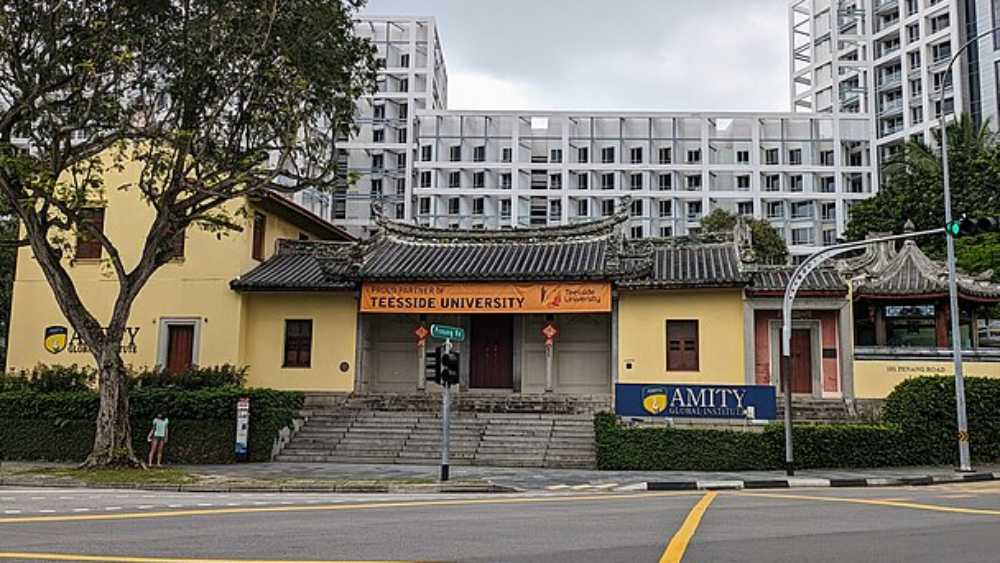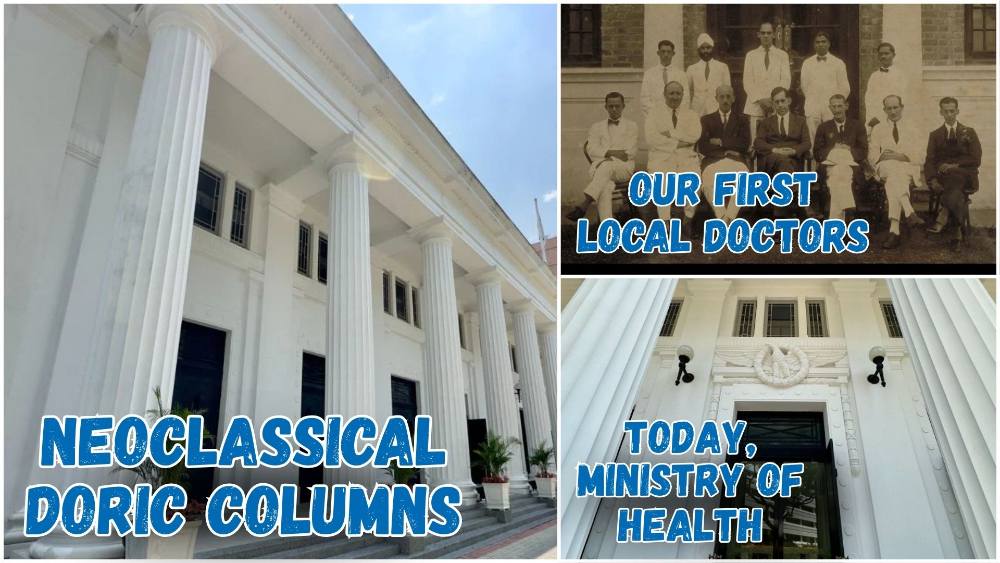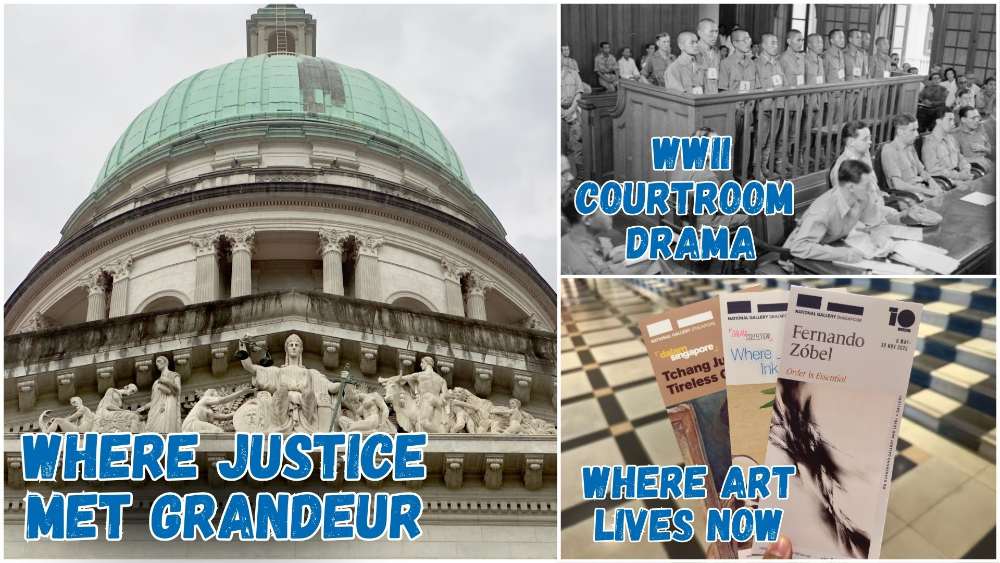National Monuments Of Singapore: House Of Tan Yeok Nee
What is a National Monument? Who gazettes them? How many national monuments are there in Singapore? To date, the Preservation of Sites and Monuments, a division of National Heritage Board, has identified and gazetted 75 buildings, structures and sites of national significance as an integral part of Singapore’s built heritage.
And we're here to tell you all about them - one National Monument at a time!
You've probably passed by or stepped into more than a few of them without realising they were National Monuments: Al-Abrar Mosque, Asian Civilisations Museum, the Civilian War Memorial, Saint Andrew's Cathedral, the Esplanade Park Memorials, Fort Siloso on Sentosa - no need to plan an itinerary for friends visiting from overseas; just show them this article ✌️
In this edition, we zero in on a residence that was once used as the Salvation Army's headquarters in Singapore, the House of Tan Yeok Nee.
📍 Location
The House of Tan Yeok Nee was the 11th building to be gazetted as a National Monument, and is located near other National Monuments such as MacDonald House and Chesed-El Synagogue. The MRT stations nearest to it are Dhoby Ghaut and Somerset.
📅 Significant dates
Date built:
- 1882-1885: The House of Tan Yeok Nee was built
Milestones:
- 1938: The compound became the headquarters of the Salvation Army's Malayan chapter
- 1942-1945: Japanese military forces occupied the house
- 6 Jul 1951: The residence was restored to its former glory and officially reopened as the Salvation Army Command Headquarters
- 1991: The Salvation Army moved out of the house
- 1999-2000: The structure underwent a major renovation
- 2019: Amity Global Institute moved its school into the house
- 2022: The residence was sold to the family of Indonesian tycoon Bachtiar Karim, with Amity's school remaining on the premises
Date gazetted:
- 29 Nov 1974
📜 History
The House of Tan Yeok Nee's prominent location suggests the upper social status of its first owner in colonial Singapore. Tan Yeok Nee (陈毓宜), also known as Tan Hiok Nee (陈旭年), was an affluent businessman from Chaozhou (潮州) in Guangdong Province. He began his chapter in Singapore as a textile vendor before expanding into the pepper and gambier (used as a brown dye and tanning agent then) trade, and later, opium and spirit (alcohol) farms. Not long after, Tan became one of the richest Teochew merchants in Singapore.
From 1882 to 1885, Tan built his private residence on a plot with exceptional fengshui (Chinese geomantic) qualities: the house was backed by Oxley Hill that had a stream (present-day Stamford Canal) flowing in front of it, and stretched across Dhoby Ghaut's low-lying grounds. This configuration was believed to fend off evil and bring wealth to the homeowner.
Tan drew inspiration of the design of his house in Singapore from Cong Xi Gong Ci (从熙公祠), a cluster house he had begun constructing in his hometown of Jin Sha Xiang (金砂乡) in Chaozhou. Cong Xi Gong Ci was finished in 1884 - only a year before the Singapore house was completed.
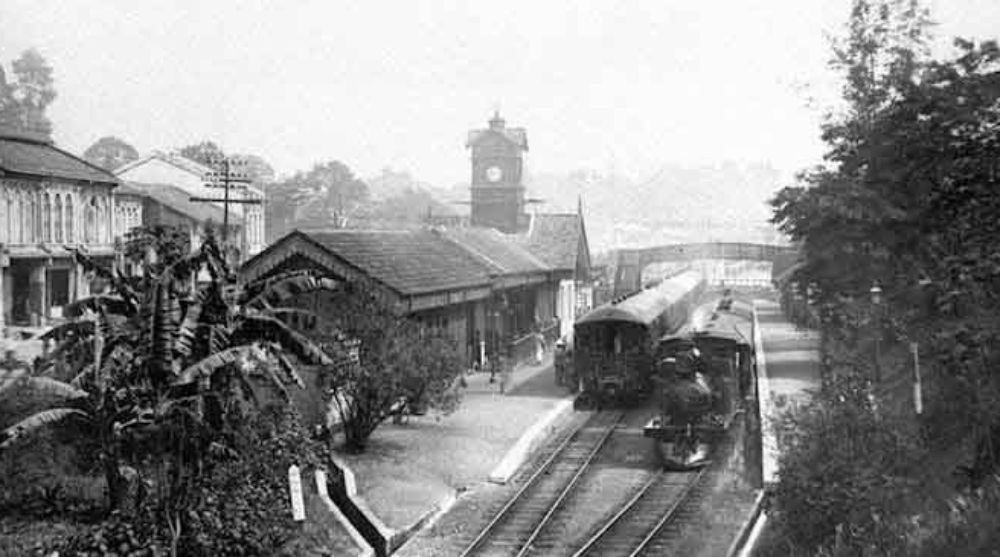 Tank Road Railway Station between circa 1902 and circa 1922. | IMAGE: WIKIMEDIA COMMONS
Tank Road Railway Station between circa 1902 and circa 1922. | IMAGE: WIKIMEDIA COMMONS
After Tan's family left the estate in 1902 due to nearby dust and noise from a nearby railway construction, the British Administration acquired it. The railway (Tank Road Railway Station) was being built at the time to connect Keppel Harbour and Johor via Tank Road. When it opened in 1902, the Station Master moved into the empty House of Tan Yeok Nee nearby.
Later, the residence was given to the Church of England as a trust. By then, it was called Temple House, since it bore similarities to a Chinese temple. Under the Church of England, Temple House became Saint Mary's Home and School, which served Eurasian girls.
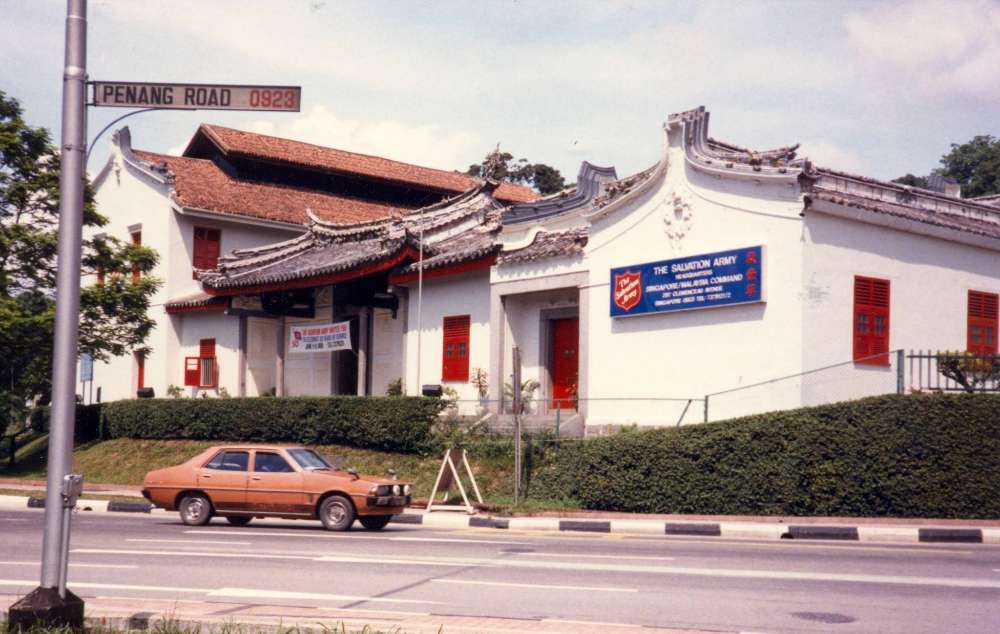 IMAGE: FACEBOOK/@THE SALVATION ARMY SINGAPORE
IMAGE: FACEBOOK/@THE SALVATION ARMY SINGAPORE
From 1938, Tan's former home became the headquarters of the Salvation Army's Malayan division. The Salvation Army is a London-based Christian organisation founded in 1865 that helps the less fortunate. Brigadier Herbert A. Lord was credited for the formation of the Salvation Army in Singapore in 1935.
When Singapore fell to the Japanese in 1942, the Salvation Army was evicted by the Japanese military, which took over the house. The residence suffered significant damage during the war, and the occupying forces used it for storage. It was often looted towards the end of the Japanese Occupation (1942-1945).
After World War Two, the Salvation Army returned and restored the mansion to its former glory. On 6 Jul 1951, Governor Sir Franklin Gimson officially reopened the house as the Salvation Army Command Headquarters. The Salvation Army stayed at the House of Tan Yeok Nee until 1991, when they relocated to a new, larger facility in Bishan.
In 2019, Amity Global Institute moved its school into the compound. Three years later, the family of Indonesian tycoon Bachtiar Karim bought over the House of Tan Yeok Nee, with Amity's school remaining on the compound till today.
📐 Design and architecture
The House of Tan Yeok Nee, a Chinese-style mansion, is the last remaining of the “Four Grand Mansions” constructed by Teochew towkays (entrepreneurs) in late 19th-century Singapore.
The House of Tan Yeok Nee is a standout example of traditional Teochew architecture, known for its almost-straight roof ridges. The residence’s roofs are vibrant and richly decorated with carvings, paintings, and even calligraphy, reminiscent of the elaborate roof design found in Yueh Hai Ching Temple – a National Monument, and one of Singapore’s oldest Teochew temples.
The roof’s miniatures were crafted using a unique method called qian ci (嵌瓷, “inlaying porcelain”), or jian nian (剪粘, “cut and paste”) in Hokkien architecture. This technique details cutting colourful ceramics into smaller pieces and arranging them into intricate mosaic designs. Horses, a favoured decorative motif on the roof ridges of the House of Tan Yeok Nee, hold special significance as 1882 (the year the mansion began construction) was the Year of the Horse, according to the Chinese zodiac.
The compound features symmetrical halls aligned to a central axis. The main hall showcases elaborate sculptures and carvings on its exposed roof trusses (a framework of posts supporting a roof), while smaller side courtyards lead to various rooms and spaces. An interesting touch in the entrance courtyard includes koi sculptures at the junctions between two roofs. These serve as both ornamental additions and functional elements, draining rainwater through their open mouths.
The structure's last major restoration took place from 1999 to 2000.
🕖 Opening hours
The House of Tan Yeok Nee is open 24 hours daily.
🎟️ Admission
Entry is free, but take note not to disturb the students on campus.







